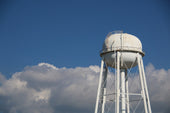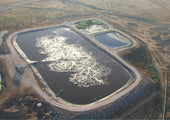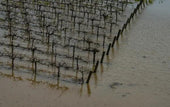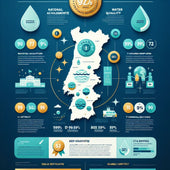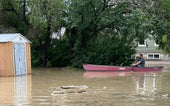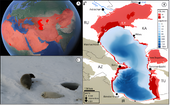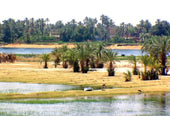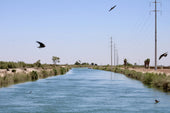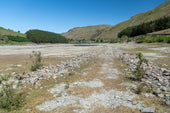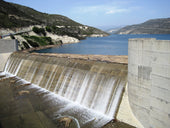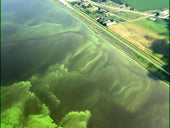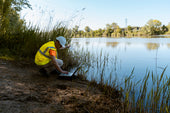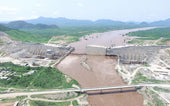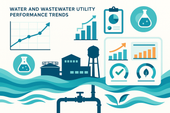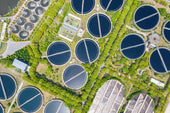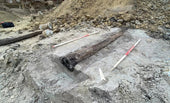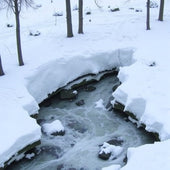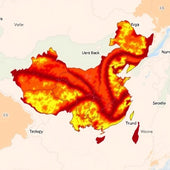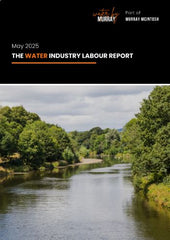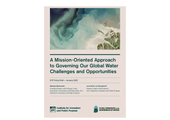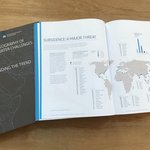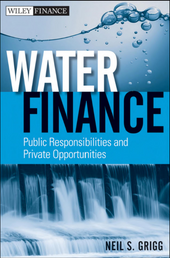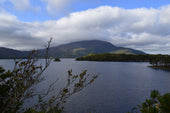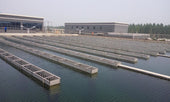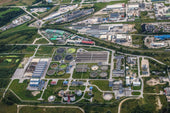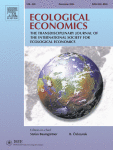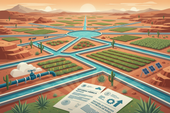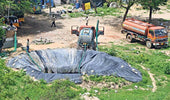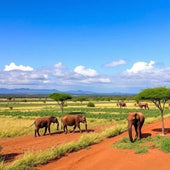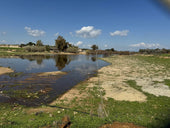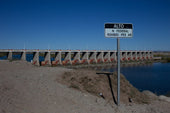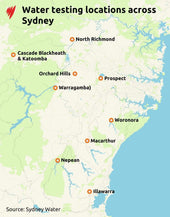Tracking Atmospheric Water to Close Global Cycle
In a landmark study published in Communications Earth & Environment, a team of scientists led by De Petrillo, Fahrländer, Tuninetti, and colleagues has made a significant breakthrough in understanding Earth’s global freshwater cycle by reconciling tracked atmospheric water flows. Their research addresses persistent discrepancies that have long challenged hydrologists and climate scientists: how to accurately close the global freshwater budget by accounting for complex atmospheric water movements. This advance promises to refine climate models and improve global water resource management at a time when freshwater scarcity is an urgent global issue.
The global freshwater cycle, also known as the hydrological cycle, describes the continuous movement of water on, above, and beneath the Earth’s surface. Despite its fundamental role in sustaining terrestrial life and ecosystems, precisely quantifying this cycle remains elusive because of the complexities in tracking water vapor and precipitation through the atmosphere. Prior models often yielded mismatches between atmospheric moisture inflows and outflows, creating gaps in the overall freshwater inventory. The new methodology integrates state-of-the-art water vapor tracking techniques with atmospheric circulation data to resolve these discrepancies.
Central to this research is a methodological innovation: the use of satellite remote sensing combined with novel atmospheric moisture tracking algorithms to trace water vapor mass as it moves globally. By employing advanced isotopic and tracer-based techniques, the researchers were able to follow distinct parcels of atmospheric moisture from evaporation zones over oceans through to their ultimate precipitation on land or return to the oceans. This granular approach provides unprecedented insight into the sources, pathways, and sinks of atmospheric water, allowing the freshwater cycle to be ‘closed’ with much greater accuracy than before.
One of the study’s key technical contributions is the integration of high-resolution atmospheric reanalysis datasets with moisture tracking algorithms. Atmospheric reanalysis combines historical observation data with numerical weather prediction models to estimate past atmospheric states. By applying water tracking within these datasets, the authors successfully linked the evaporation of water from specific oceanic regions with precipitation events thousands of kilometers away. This tracking exposes concealed intercontinental hydrological connections, highlighting how oceanic evaporation directly sustains terrestrial freshwater reserves far inland.
The findings reveal that previous global water budgets underestimated the volume of moisture transported by atmospheric rivers, high-moisture corridors that funnel water vapor across continents. These atmospheric rivers act as vital conveyors, delivering moisture that fuels precipitation in distant terrestrial ecosystems. By quantifying their contributions more precisely, the study sheds new light on the critical role atmospheric circulation plays in redistributing freshwater. This challenges existing paradigms which have primarily emphasized local evaporation-precipitation processes, underscoring how interconnected the planetary water cycle truly is.
Moreover, the ability to reconcile tracked atmospheric water flows impacts climate model fidelity. Most Earth system models simplify or parametrize moisture transport, leading to cumulative errors in predicting precipitation patterns and freshwater availability. The incorporation of detailed moisture tracking data offers a pathway to improve model parameterization of hydrological processes, particularly in simulating extreme weather events such as droughts and floods. As water scarcity crises intensify globally, such improvements could bolster water management policies and disaster preparedness.
The research team also explored implications for groundwater replenishment and soil moisture dynamics. Atmospheric moisture delivered via precipitation is a primary source of groundwater recharge. By quantifying how moisture travels through the atmosphere and precipitates over specific regions, water managers can better understand the temporal variability of groundwater inputs. This knowledge is critical for agricultural planning, especially in water-stressed areas where groundwater serves as a buffer against rainfall variability but is vulnerable to over-extraction.
An intriguing aspect unearthed by this study is the natural variability of atmospheric moisture transport patterns under different climate regimes. By analyzing historical data spanning multiple decades, the authors demonstrated how large-scale atmospheric circulation shifts influence the volume and timing of moisture delivery to major river basins. This has important consequences for predicting the hydrological impacts of global warming, as altered atmospheric dynamics may shift freshwater availability both spatially and seasonally, affecting ecosystems and human populations.
The approach also allowed the team to quantify “moisture recycling” — the fraction of precipitation over land that originated as evaporation from nearby terrestrial sources. This local recycling process plays a pivotal role in sustaining regional climates and ecosystems, yet its magnitude has been contentious. The study’s results clarify the extent to which moisture is recycled locally versus imported from remote oceanic sources, providing key input for regional climate adaptation strategies that hinge on maintaining land-surface moisture feedbacks.
Technically demanding, this research required synthesis of interdisciplinary expertise ranging from atmospheric physics and hydrology to computational data science. The researchers leveraged state-of-the-art numerical models, high-performance computing, and diverse observational networks including satellites, ground-based radars, and atmospheric soundings. The resultant integrated framework exemplifies how multidisciplinary collaboration can unravel complex Earth system processes and solve longstanding scientific puzzles.
Crucially, the findings raise awareness of the fragile balance sustaining the global freshwater cycle in the Anthropocene. Human activities such as deforestation, urbanization, and greenhouse gas emissions perturb atmospheric circulation and land surface conditions, potentially altering moisture flows revealed by this study. Understanding these baseline atmospheric water pathways is a prerequisite for predicting how global change may disrupt freshwater provision, thereby informing mitigation and adaptation policies at international scales.
Looking forward, the authors advocate for further integration of moisture tracking into Earth system models and urged increased investment in continuous atmospheric observation networks. Expanding the spatial and temporal resolution of moisture flux measurements would enhance model validation and enable near real-time monitoring of atmospheric water flows. This capability could revolutionize drought forecasting and enable dynamic water resource management informed by evolving atmospheric signals rather than solely by ground-based measurements.
To summarize, this groundbreaking research provides a powerful toolset to finally close the global freshwater cycle by tracking atmospheric water flows with unprecedented precision. By exposing previously hidden connections between oceans, atmosphere, and land, the study improves our fundamental understanding of the planetary water system. It offers critical insights for climate science, water resource stewardship, and environmental sustainability, all while highlighting the intricate beauty and dynamic complexity of Earth’s atmosphere.
As freshwater becomes an increasingly scarce and contested resource worldwide, such advances could not be more timely. The ability to map and quantify atmospheric moisture transport opens new frontiers in predicting how shifts in the water cycle will affect regional climates, agricultural productivity, and human livelihoods. This knowledge equips policymakers and stakeholders with scientific evidence necessary to craft water management strategies resilient to changing climate realities.
Beyond its immediate hydrological implications, the methodology pioneered in this study serves as a conceptual blueprint applicable to other geophysical cycles involving complex material transport through turbulent atmospheric flows. By leveraging cutting-edge remote sensing, computational modeling, and tracer theory, scientists now have a robust framework to monitor and understand Earth’s fluid envelopes with unprecedented fidelity.
In conclusion, the reconciliation of atmospheric water flows underpins a transformative leap in Earth system science. De Petrillo, Fahrländer, Tuninetti, and their team’s work illustrates the profound insights gained when innovative technology meets rigorous interdisciplinary collaboration. As the global community confronts escalating water-related challenges, such breakthroughs are essential for safeguarding planetary health and human well-being in the decades ahead.
Subject of Research: Tracking atmospheric water flows to close the global freshwater cycle and improve understanding of the hydrological budget.
Article Title: Reconciling tracked atmospheric water flows to close the global freshwater cycle.
Article References:
De Petrillo, E., Fahrländer, S.F., Tuninetti, M. et al. Reconciling tracked atmospheric water flows to close the global freshwater cycle. Commun Earth Environ 6, 347 (2025). https://doi.org/10.1038/s43247-025-02289-y
Image Credits: AI Generated
